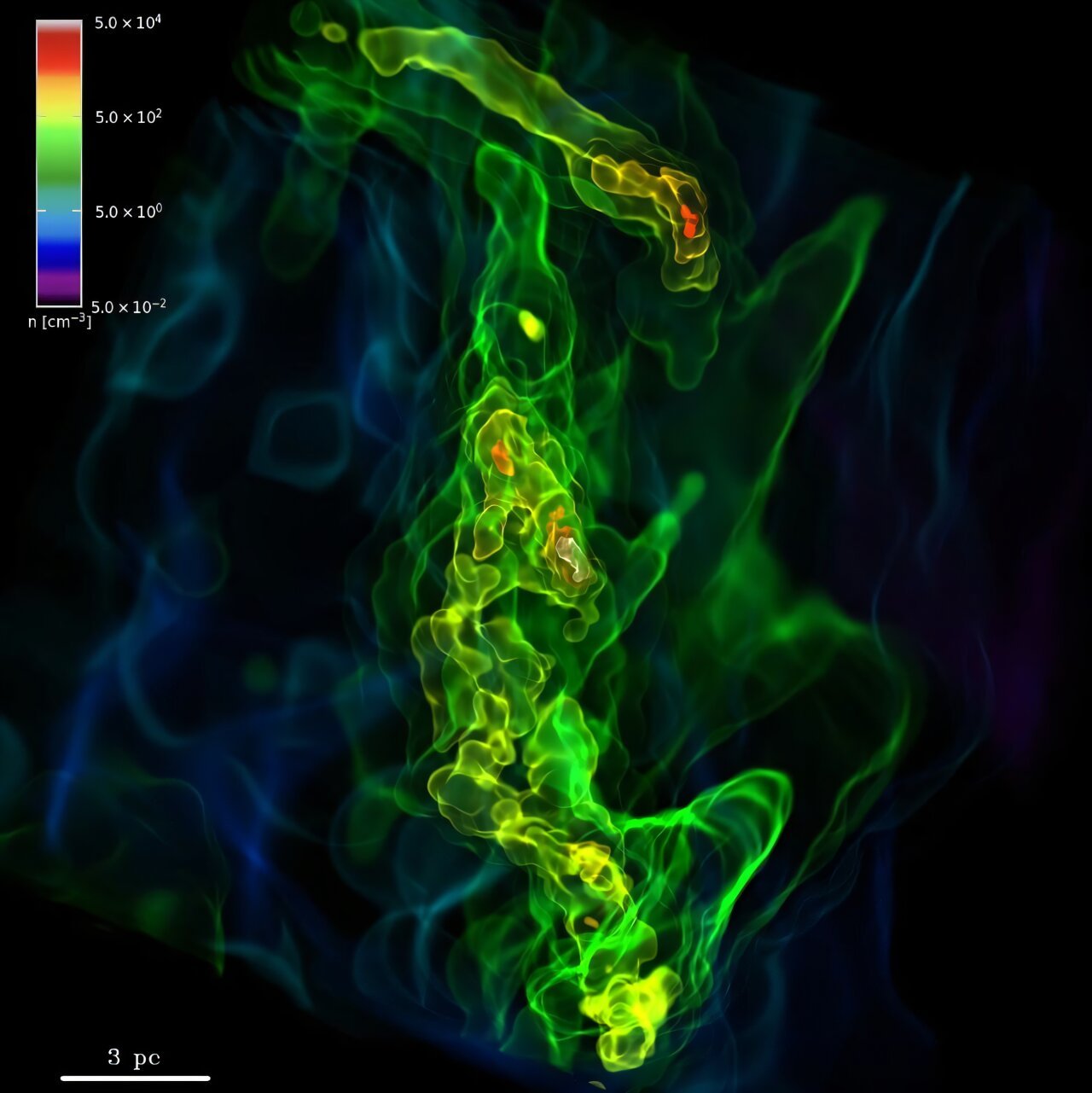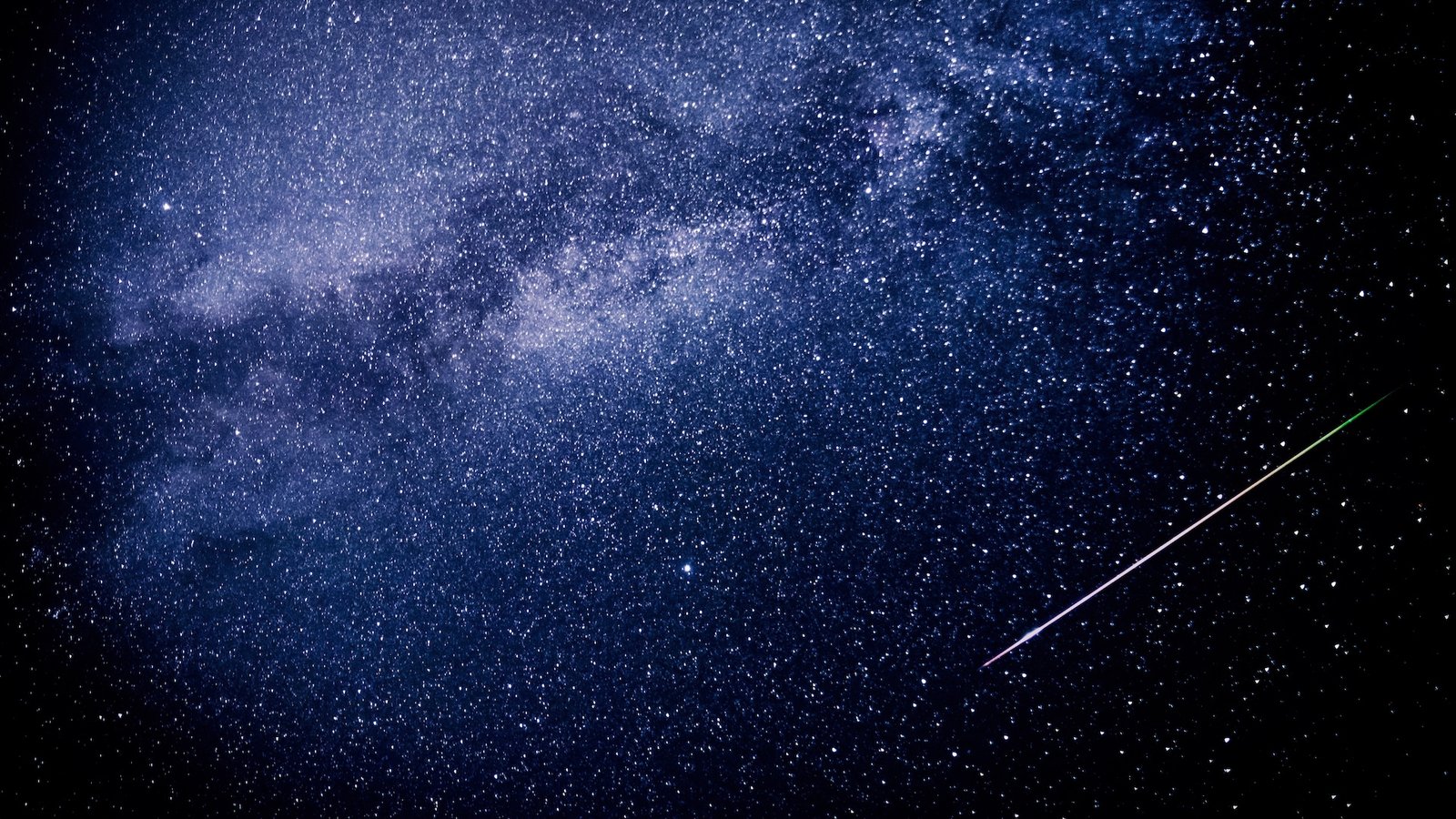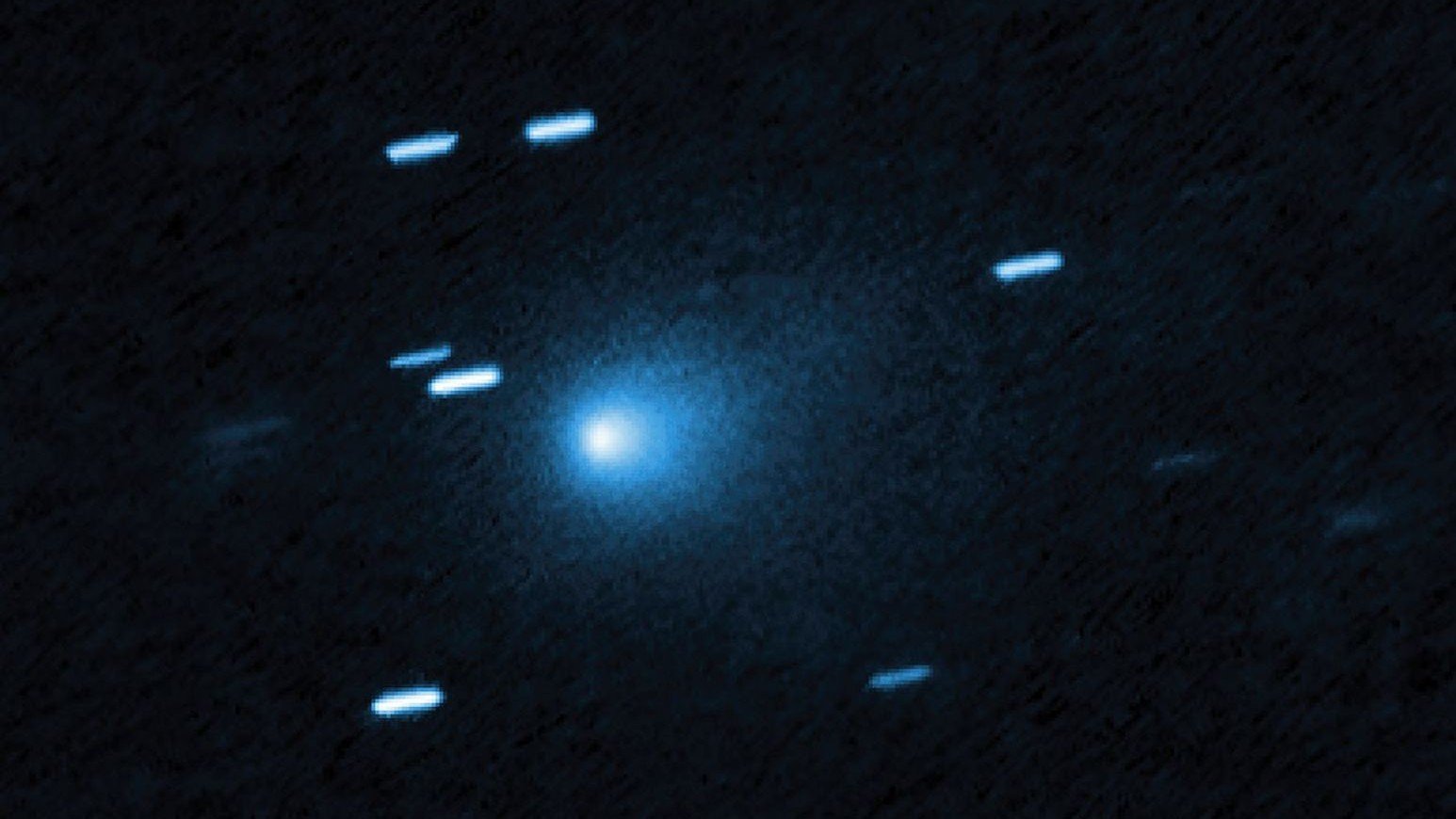
Understanding the early universe is a foundational goal in space science. We’re driven to understand nature and how it evolved from a super-heated plasma after the Big Bang to the structured cosmos we see around us today. One critical moment in time was when the first stars, called Population 3 stars, ignited with fusion and lit up their surroundings.
What events preceded the very first Population 3 stars? How did they form and what type of stars were they? There are barriers to understanding or observing the early universe, though the JWST has done an admirable job of overcoming some of those barriers by observing light from the first galaxies.
But observing galaxies is one thing. Observing the formation of individual stars more than 13 billion years ago is functionally impossible. Fortunately, supercomputer simulations can get us close.
New research used the cutting-edge GIZMO simulation code and data from the IllustrisTNG Project to replicate the conditions when the universe formed its first stars.
The research is titled “Formation of Supersonic Turbulence in the Primordial Star-forming Cloud,” and it’s published in The Astrophysical Journal Letters. The lead author is Ke-Jung Chen, from the Institute of Astronomy and Astrophysics at Academia Sinica, in Taiwan.
The period before the first stars illuminated their surroundings is called the Dark Ages. At this time, the universe had cooled enough to become transparent and allow light to travel. But there were still no stars, so no light sources. The Dark Ages began about 370,000 years after the Big Bang and ended as Population III stars formed a few hundred million years later.

Scientists have unanswered questions about the Dark Ages. One of the biggest mysteries concerns dark matter. How did the first dark matter mini-halos collapse and create the scaffolding upon which the first stars formed? What were conditions like inside the primordial gas clouds that led to the stars’ formation? The researchers used simulations to try to answer these questions.
“We present new simulations of the formation and evolution of the first star-forming cloud within a massive minihalo of mass of 1.05 × 107 solar masses, carried out using the GIZMO code with detailed modeling of primordial gas cooling and chemistry,” the researchers write.
“Unlike previous studies that simulated the formation of the first stars within a smaller cosmological box size of ∼0.3–2 Mpc, our work adopts initial conditions from the large-scale cosmological simulations, IllustrisTNG, spanning ∼50 Mpc to study the formation of primordial clouds that give birth to the first stars.”
IllustrisTNG is a well-known and often-used simulation of the universe. The researchers were able to boost IllustrisTNG’s resolution with a technique called particle splitting. That allowed them to track the movement of gas in the cloud on an unprecedented scale, down to a fraction of a parsec.
“We increase the original resolution of IllustrisTNG by a factor of ∼105 using a particle-splitting technique, achieving an extremely high resolution that allows us to resolve turbulence driven by gravitational collapse during early structure formation,” the authors explain.
The simulation begins with a dark matter mini-halo, and it shows gas falling into the mini-halo’s gravitational well. Gas streams in at high speeds and accumulates near convergence points associated with small dark matter structures. Eventually, a dense cloud forms with thin gaseous structures in it. As it fell, the gas moved at five times the speed of sound, generating supersonic turbulence. The gas streams toward the center and begins to rotate.

The high-velocity turbulence split the cloud into several dense clumps of primordial gas. Rather than disrupting the star formation process, the turbulence seems to encourage it. One of the clumps is poised to form an 8 solar mass star.
“This evolution demonstrates that the gas accretion is highly anisotropic and inhomogeneous, resulting in clumpy structures, which are likely shaped by tidal forces from the assembling dark matter halo,” the authors explain.
“This is the first time we’ve been able to resolve the full development of turbulence during the earliest phases of the first star formation,” said lead author Chen in a press release. “It shows that violent, chaotic motions were not only present—they were crucial in shaping the first stars.”
Astronomers have wondered about the universe’s first, Population III stars. Some research shows that they formed as solitary, massive stars in a smooth process. However, these simulations show that the clouds were fractured into clumps, and that Pop III stars were both more numerous and less massive than thought.

These results could explain something that has puzzled scientists. If Pop III stars were as massive as thought, many of them should’ve exploded as supernovae, leaving chemical fingerprints of metallicity in the next generation of stars, the oldest stars that we can observe.
But while researchers have found hints of this enriched metallicity, they’ve never found conclusive evidence. If these simulations are correct, we don’t see these chemical fingerprints because the first stars weren’t as massive as thought and only rarely exploded as supernovae.
“Our results suggest that early structure formation can naturally generate supersonic turbulence, which plays a crucial role in shaping primordial gas clouds and regulating the mass scale of Pop III stars,” the authors write in their conclusion.
These high-resolution simulations open a new window into the early universe. If Pop III stars were not as massive as thought, it changes our understanding of the course of events. Theoretical models show that Pop III stars have masses between 80 and 260 solar masses, and that they would die as pair-instability supernovae.
But these types of SN leave unique signatures which haven’t been observed. These simulations suggest that the reason those signatures don’t exist is because our theories are wrong and need updating.
“This simulation represents a leap forward in connecting large-scale cosmic structure formation with the microscopic processes that govern star birth,” said Chen.
“By uncovering the role of turbulence, we’re one step closer to understanding how the cosmic dawn began.”
More information:
Ke-Jung Chen et al, Formation of Supersonic Turbulence in the Primordial Star-forming Cloud, The Astrophysical Journal Letters (2025). DOI: 10.3847/2041-8213/adf18d
Provided by
Universe Today
Citation:
The universe’s first stars unveiled in turbulent simulations (2025, August 8)
retrieved 8 August 2025
from https://phys.org/news/2025-08-universe-stars-unveiled-turbulent-simulations.html
This document is subject to copyright. Apart from any fair dealing for the purpose of private study or research, no
part may be reproduced without the written permission. The content is provided for information purposes only.




